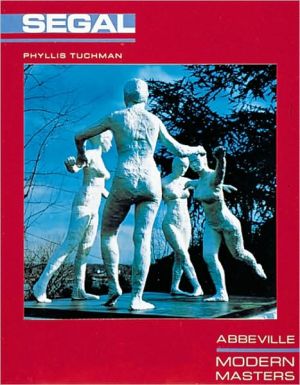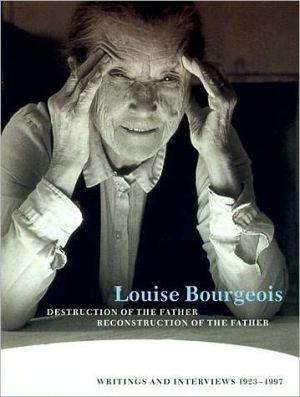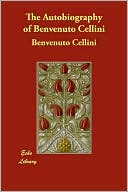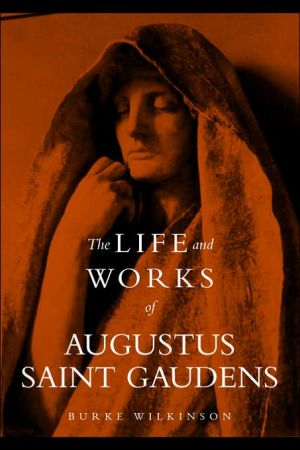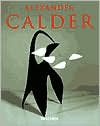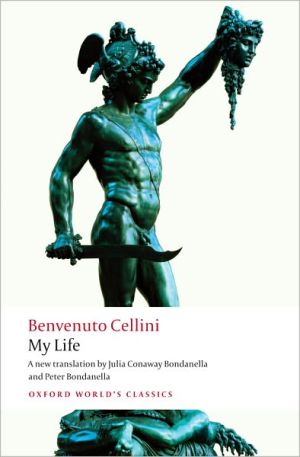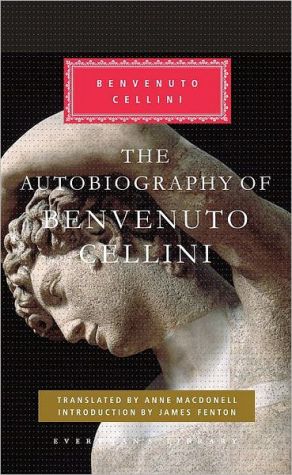George Segal
George Segal (born 1924) has brought realistic sculpture back to life with his evocative plaster figures, cast directly from the model and often left a ghostly white. They are frequently arranged in familiar urban environments such as diners, movie theaters, and butcher shops. More recent and more colorful work--including the bronze monuments, fragments, and pastels--is also thoroughly represented in the book.\ About the Modern Masters series:\ With infomative, enjoyable texts and over 100...
Search in google:
George Segal (born 1924) has brought realistic sculpture back to life with his evocative plaster figures, cast directly from the model and often left a ghostly white. They are frequently arranged in familiar urban environments such as diners, movie theaters, and butcher shops. More recent and more colorful work--including the bronze monuments, fragments, and pastels--is also thoroughly represented in the book. About the Modern Masters series: With infomative, enjoyable texts and over 100 illustrations--approximately 48 in full color--this innovative series offers a fresh look at the most creative and influential artists of the postwar era. The authors are highly respected art historians and critics chosen for their ability to think clearly and write well. Each handsomely designed volume presents a thorough survey of the artist's life and work, as well as statements by the artist, an illustrated chapter on technique, a chronology, lists of exhibitions and public collections, an annotated bibliography, and an index. Every art lover, from the casual museumgoer to the serious student, teacher, critic, or curator, will be eager to collect these Modern Masters. And with such a low price, they can afford to collect them all. Other Details: 115 or more illustrations, approximately 48 in full color 128 pages 8 1/2 x 8 1/2" Published 1991considerable body of work behind him; several retrospective exhibitions mounted in major museums throughout the United States, Europe, and Japan; books published about his work; and a Michael Blackwood documentary broadcast by PBS, Segal receives an increasing number of public commissions in bronze. Unsought notoriety has surrounded several of these projects, while others have been heartily embraced. (When The Steelmakers was installed in Youngstown, Ohio, he was given the key to the city.) While Segal speaks of having been "burned" on several occasions, he asserts, "If the opinions expressed about art are bland, more than likely the art lacks bite and perception."
Introduction\ For more than twenty years, George Segal has begun his sculptures by wrapping friends, relatives, and models in plaster-soaked bandages. This technique has proven to be astonishingly fertile. Pliant, hollow forms have served as the basis for several hundred single and multifigure compositions as well as scores of body-part fragments.\ Initially, the white surfaces were always left bare; today, most are colored and frequently bear more than a passing resemblance to the second-generation Abstract Expressionist canvases that Segal made throughout the 1950s and into the 1960s. Often both the ghostly and the tinted characters interact with objects in environmental situations in which their poses seem utterly natural and lifelike. Three pedestrians wait on a corner while a streetlight blinks, "Walk, Don't Walk." Two lovers embrace on a bed. A naked woman gazes through a curtained window.\ Although it is the realistic aspects of Segal's art--the figures and their surroundings--that first attract a viewer's attention, the sculptures are developed formally according to the principles of twentieth-century abstraction. Upon further reflection, it becomes clear that the artist seeks to evoke either a philosophical or psychological truth about his models and their actions. One is either seduced at first glance by these works or else one dismisses them just as readily. But the viewer who is intrigued will be rewarded by the opportunity to ponder a broad range of interests and issues.\ Segal is fascinated by human relationships. Works with only one character seated by a window or standing by a door often communicate a harrowing loneliness. But many of his other scenes consist ofmultiple figures that relate to each other according to the situation at hand. People gather around a dinner table or wait to board a bus. The Brick Wall (1970) vividly illustrates how much Segal can convey with a simple gesture. The married couple who posed for it--a psychiatrist and a painter--seem merely to walk side-by-side along a brick wall when they are seen head-on. The way the doctor's left arm is wrapped around his wife's waist is visible only when the pair is viewed from the rear, but it is this subtle gesture that reveals the bonding in their relationship.\ When talking about his work, Segal will refer to its various levels of meaning. Political consciousness, for example, has been integrated into certain environments from early in his career to the present. The Bus Riders was made in 1962 at the height of the activities of the Freedom Riders in the Deep South. The Execution appeared in 1967 when teach-ins and sit-ins against the Vietnam War were rampant on college campuses. More recently, Gay Liberation, a bronze of 1980, treats another subject not commonly associated with the fine arts. Just as surprisingly, Segal has also produced a number of sculptures that reflect upon the teachings of the Torah. In works like The Legend of Lot, The Sacrifice of Isaac, and The Holocaust he has endeavored to deal with present-day questions of morality.\ In yet another group of sculptures, Segal has made art about art in unexpected ways. He adores Mondrian. In many of his early works, Segal balanced form and color in environments as if he were creating a three-dimensional abstract picture by using realistic elements instead of lines and planes. In 1967 he actually included a painting by Mondrian in a portrait of Segal's art dealer, Sidney Janis. Eleven years later, he wittily fashioned a plastic ceiling in The Hot Dog Stand as if it were an ersatz canvas by the early modern master.\ George Segal--a bespectacled, bushy-haired man of fifty-nine who generally wears comfortable, rumpled clothing--loves to tell a good story and to analyze philosophical questions with old friends and new acquaintances. As an art student during the late 1940s, he was trained by leading abstractionists of the day. He came to public attention during the early 1960s with his life-size plaster figures set among actual chairs and tables. Now, with a considerable body of work behind him; several retrospective exhibitions mounted in major museums throughout the United States, Europe, and Japan; books published about his work; and a Michael Blackwood documentary broadcast by PBS, Segal receives an increasing number of public commissions in bronze. Unsought notoriety has surrounded several of these projects, while others have been heartily embraced. (When The Steelmakers was installed in Youngstown, Ohio, he was given the key to the city.) While Segal speaks of having been "burned" on several occasions, he asserts, "If the opinions expressed about art are bland, more than likely the art lacks bite and perception."
Introduction Background Early Cast Sculpture Theme and Variation Fragments and Painted Plasters Public Commissions Artist's Statements Notes on Technique Chronology Exhibitions Public Collections Selected Bibliography Index Author Biography: Phyllis Tuchman is a critic and art historian who teaches and writes about art, particularly sculpture. She has taught at Williams College, Hunter College, and the School of Visual Arts.
